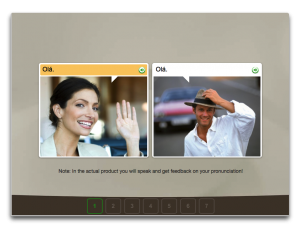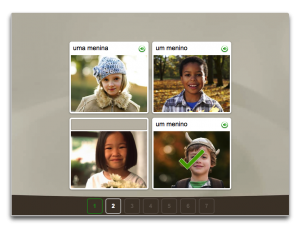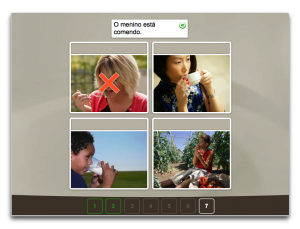Ever watched a marathon on TV?
Yup, I thought so. It's painful watching while all those folks make their way through the bay, over the bridge and finally to their destination. Instead it's much easier to watch the 100 metre sprint. It starts, and they're off. And then nine second later, there's a finish line in sight.
Your report needs to be like a sprint, not a marathon. And there's a reason why.
When customers come to your website for the first time, it's likely that you'll entice them with a report
It's also quite likely that they'll sign up for that report, or read it online (depending on how you deliver the report). And while you can get fascinating reports of marathon-length, remember that this report is almost like a first impression.
If you spend way too much time labouring over the details, the customer may never get to the end. And the goal of this report—among all other reports—is to get the customer to the end; to get the customer to consume it completely.
So ideally your report should be as long as an article
You'll be surprised to know that a 800-1000 word article spreads out nicely across a PDF. Put in a few graphics, a few callouts, an introduction and you have a report that's extremely consumable, and nicely presented too. The reason for this is that your report is just an hors d'ouevre, a starter as it were. You don't want to deliver an entire meal, you just want to get the client hungry for more.
In our membership site at 5000bc, we may do a report on bonuses, for example
That report may be almost 40-50 pages long. That's fine when the customer is familiar with your work and is more than keen to read your mini-book. When the customer first gets to the Psychotactics site, they get the Headline report—and that was originally an article, which was turned into a report. It's short, to the point and that's what you really want to give the customer the first time around.
This doesn't mean that your report needs to be incomplete. It just needs to be short, and complete. Which of course takes us to the second point: the need for action.
So why does a report need to be action-oriented?
At Psychotactics, we have lots of concepts like consumption, target profile etc. Notice then how the report doesn't take on any of these “esoteric” topics. Instead it stays with something easily understood (in this case, “headlines”). But what's also important is that the headline report has three core steps. You start at Point A, bounce over to Point B and by Point C, you're done.
Within three core points, the customer is able to figure out a change in the way they perceive, and will write headlines in the future. This is not some theory of the universe in a report. It's a simple method of “here are three mistakes, here's how you spot them and voilà, let's fix them”. The moment the customer is able to go from Point A to C in about 5 minutes, she's hooked. Now she wants more.
Most well-designed “reports” are built this way
For instance, if you go onto the Rosetta Stone site, you're invited to do a small test. In a few minutes you realise you can speak and understand bits of a foreign language. What really gets your attention is the state change and how you go from beginner to “pro” in a few minutes. And the same applies to the report. Give them something they can use, and use right away.
Oh, this brings us to the third point: mistakes!
We covered this in the second section didn't we? But here goes again. When you're reading the Headline report, you get shown the wrong headline and then the right one. In effect, the report is training you to see the mistake.
This mistake form of learning is very important no matter whether you're talking about headlines, baking cakes or selling homes. You need to empower the reader so that they can quickly spot the mistake, and then fix it themselves.
Often reports don't do this empowerment stuff
They blah-blah on instead of simply empowering the customer. And no matter what your business, you'll have three things that make you shake your head in frustration every single time. You see people making these mistakes and a little tweak could fix those mistakes.
So yes, put in the mistakes and let your customers recognise the mistakes. Then show them how to fix it. The moment they can fix it, they feel a greater sense of pride and achievement.
So when we look at the Rosetta Stone site, they get all the points right
1: The sample is a short length. No long-winded nonsense.
2: It's very action oriented. You learn quickly from the words and pronunciation causing you to feel empowered.
3: It also shows you where you make a mistake. And how to fix it.
If you examine the Headlines Report, you'll find (not surprisingly) that it gets all these points right as well.

Notice how short it is? Just seven points that would take you a few minutes at best.

It's action oriented. You start getting things right almost immediately.

You also have the ability to make mistakes. And that's very powerful and often something that we tend to leave out. Mistakes are amazing motivators once we know how to spot and then fix them.
But do you have to write a short report? Won't a long one impress?
Yes a long one will impress, but remember that the goal is consumption. It's easier for a new customer to take a smaller bite and then keep them coming back for more than a situation where they fully intend to complete reading your report, but don't.
The consumption factor is important, because the moment you consume and like what you've consumed, you feel the need for more. So ideally keep your report article-length (about 800-1000 words), keep it action-oriented and show the client a few mistakes and help them fix it all by themselves.
Marathons are as powerful as the 100 metre sprint
But there's a time for a marathon and a time for the sprint.
With the report, use the sprint.
P.S. Here is the Headline Report if you have not read it.
Next Step: Links you should visit
1) 7 vivid and clear steps that anyone can use to make their own marketing more compelling
2) How To Speed Up Article Writing With Simple Outlines


Leave a Reply